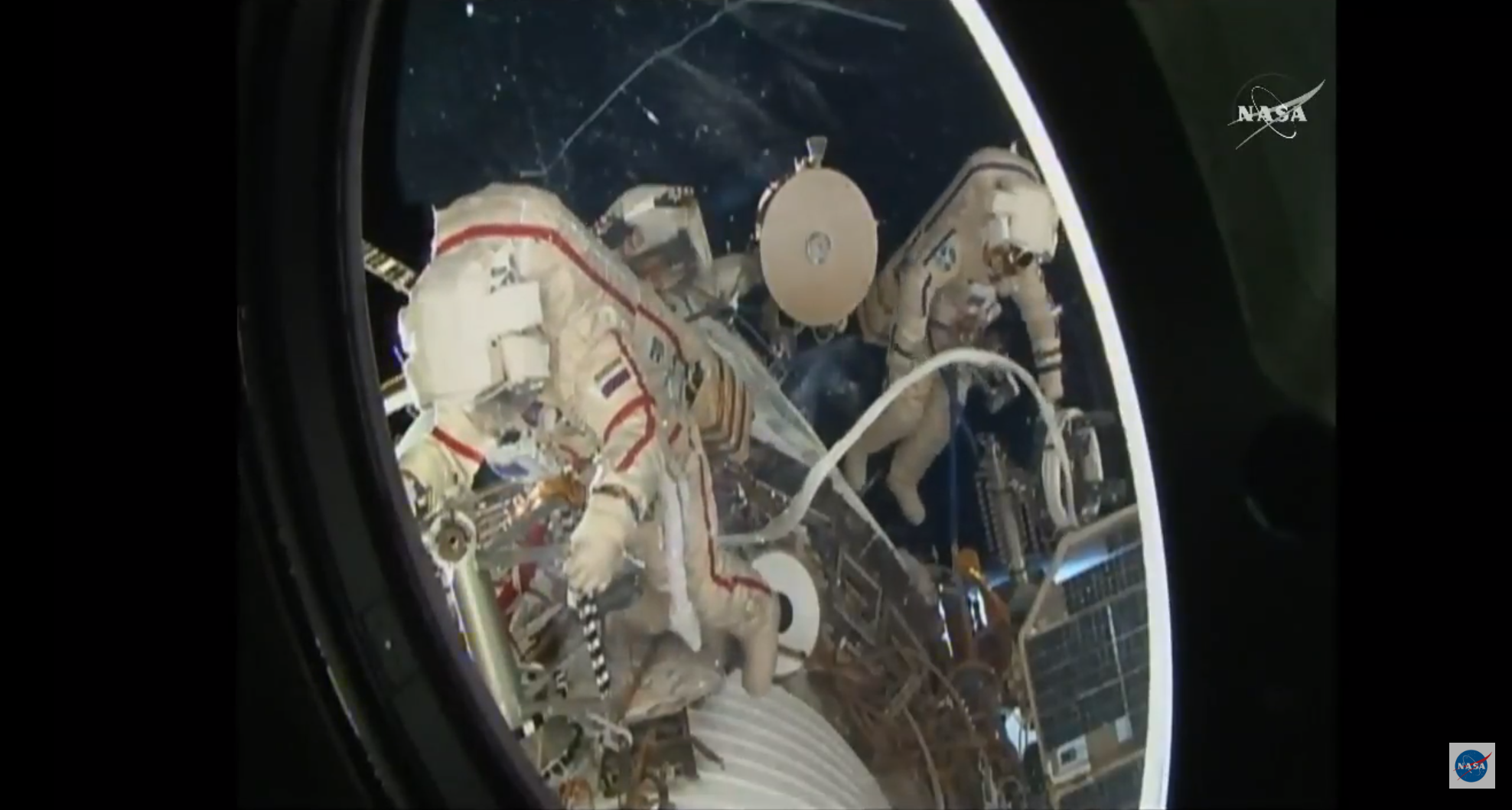Spacewalking Cosmonauts Toss Tiny Satellites From Space Station

Two Russian cosmonauts completed a grueling, nearly 8-hour spacewalk Wednesday (Aug. 15), tossing tiny satellites into orbit from the International Space Station, among other tasks.
Cosmonauts Oleg Artemyev and Sergey Prokopyev emerged from the Pirs airlock at 12:17 p.m. EDT (1617 GMT) and spent a total of 7 hours and 46 minutes at work in space. The spacewalk began about 20 minutes after its scheduled start, just in time for the International Space Station to catch sunrise over the Pacific Ocean.
"Just a reminder that safety comes first in everything you're about to do," Roscosmos staffers running the spacewalk reminded the cosmonauts before they opened the hatch.
First on the task list was for Prokopyev to deploy four small satellites by hand as the space station crossed over North America: two Tanusha satellites that will measure the density of space and study spacecraft in orbit, and two SiriusSat space weather detectors.
Next, Artemyev and Prokopyev worked on installing equipment for an experiment called ICARUS, which will allow scientists to track wildlife from space. That procedure began around 1 p.m. EDT (1700 GMT) with equipment being carried out of the docking chamber. The two cosmonauts connected a series of electrical cables and installed a complex of antennae.
"They've been charging along at a pretty good clip so far," a NASA TV commentator said about 3.5 hours into the spacewalk.
Later in the ICARUS installation procedure, tasks became more time-consuming, although the cosmonauts joked with Roscosmos staffers about having expected the spacewalk to be more challenging than it was turning out to be. "Can you give us some more difficult tasks please?," Artemyev joked almost 5 hours into the excursion. "We'll think about it," came the response from mission control.
Breaking space news, the latest updates on rocket launches, skywatching events and more!
Finally, almost 7 hours into the spacewalk, the pair of cosmonauts collected two of four sample plates that had been installed on the outside of the International Space Station as part of an experiment measuring cosmic impacts to the station. The other two sample plates are being left for a future spacewalk because the cosmonauts ran out of time on this excursion.
The cosmonauts also did not have time to complete the "get-ahead" tasks that had been planned for this spacewalk, which included throwing away the Obstanovka experiment that had been studying the connections between space weather and terrestrial weather and gathering video footage.
Nevertheless, the spacewalk was smooth sailing for the two cosmonauts. "Everything went very well, albeit a little long," NASA TV's commentator said at the end of the broadcast. "Everything went by the book."
This was the first Russian spacewalk since Alexander Misurkin and Anton Shkaplerov set a record for the longest Russian spacewalk on Feb. 2, clocking in at 8 hours and 13 minutes outside the station. Russian spacewalks are timed from when the hatch opens to when the hatch closes, a slightly different system than U.S. spacewalks use.
Artemyev has now spent 20 hours and 20 minutes outside the space station on three excursions; Prokopyev completed his first spacewalk.
The next spacewalks, scheduled for Sept. 20 and Sept. 26, will be conducted by U.S. astronauts Drew Feustel and Ricky Arnold, and European astronaut Alexander Gerst. Those excursions will focus on space-station maintenance work, including replacing batteries and power channels.
Email Meghan Bartels at mbartels@space.com or follow her @meghanbartels. Follow us @Spacedotcom, Facebook and Google+. Original article on Space.com.

Meghan is a senior writer at Space.com and has more than five years' experience as a science journalist based in New York City. She joined Space.com in July 2018, with previous writing published in outlets including Newsweek and Audubon. Meghan earned an MA in science journalism from New York University and a BA in classics from Georgetown University, and in her free time she enjoys reading and visiting museums. Follow her on Twitter at @meghanbartels.
